Are you planning a trip to Pico in the Azores? This guide lists the best things to do in Pico and will help you plan that trip!
If youʻre booking your trip to Pico last minute, we have you covered. Below are some of the top tours, hotels, and more!
🐋 Top Experiences and Tours on Pico:
- Whale watching in Pico with a biologist (top-selling tour!)
- Pico Island guided day tour (our recommendation to see it all!)
- Whale watching tour in Lajes do Pico on Pico Island
- Swimming with wild dolphins around Lajes do Pico
- PADI open water scuba diving courses on Pico Island
🛌 Top Hotels on Pico:
- Aldeia da Gingeira (luxury villa)
- Atlantic Heritage Luxury Villa (luxury villa)
- Barrocas do Mar (mid-range apartment)
- PJA – Pico Youth Hostel (budget)
🚗 Looking for the best way to get around Pico? Click here to check rental car rates for the Azores islands!
So many people flock to Sao Miguel for their Azores trip, but I really think other islands warrant some of those visitors – and Pico is one of them!
This guide will cover some of the most popular attractions in Pico, including museums, landmarks, and more!
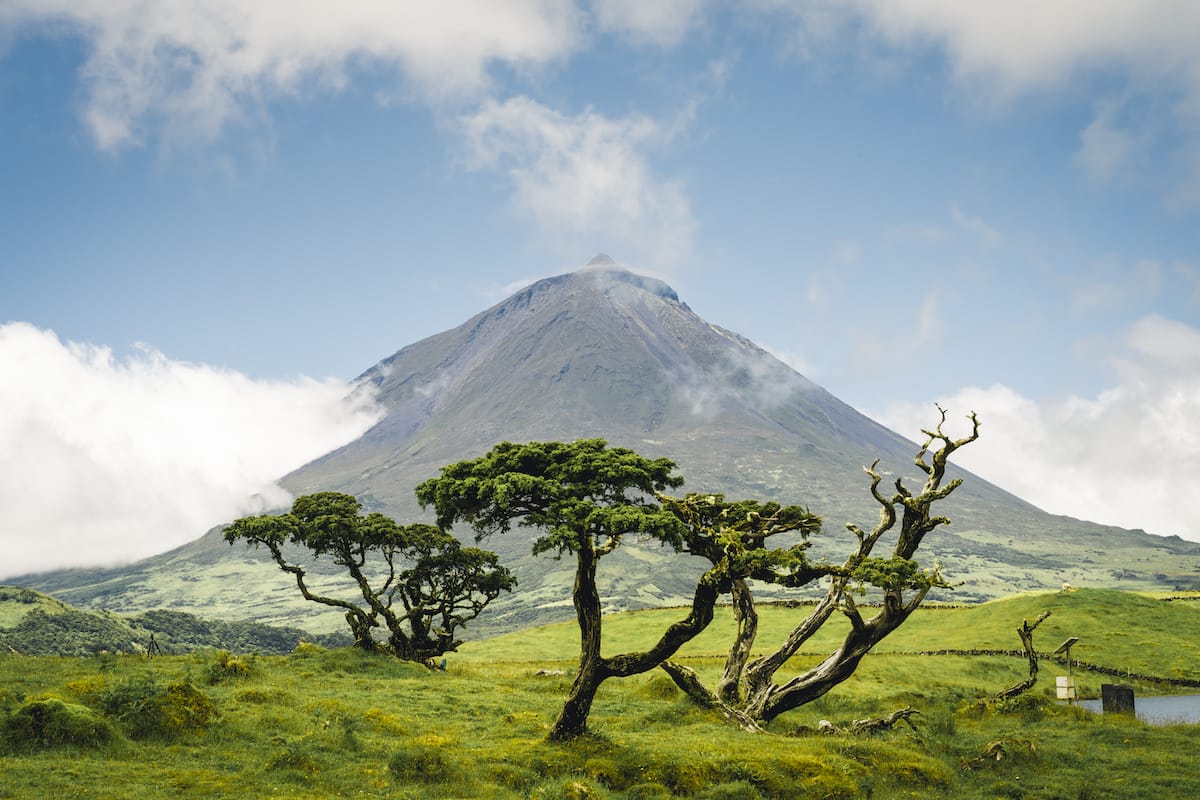
It will also disclose some of the top activities on Pico, such as whale watching, hiking, and taking an island tour.
Do you have any recommendations for what to do on Pico? Let us know in the comments!
In this post...
Best Things to Do in Pico
1. Go Whale Watching in Pico (with a Biologist!)
If you are keen to learn more about whales as you head to the Atlantic to view them, this is the tour for you!
This trip will take you to a dolphin and whale spot off of Pico where you can listen to marine biologists tell you everything about these large mammals.
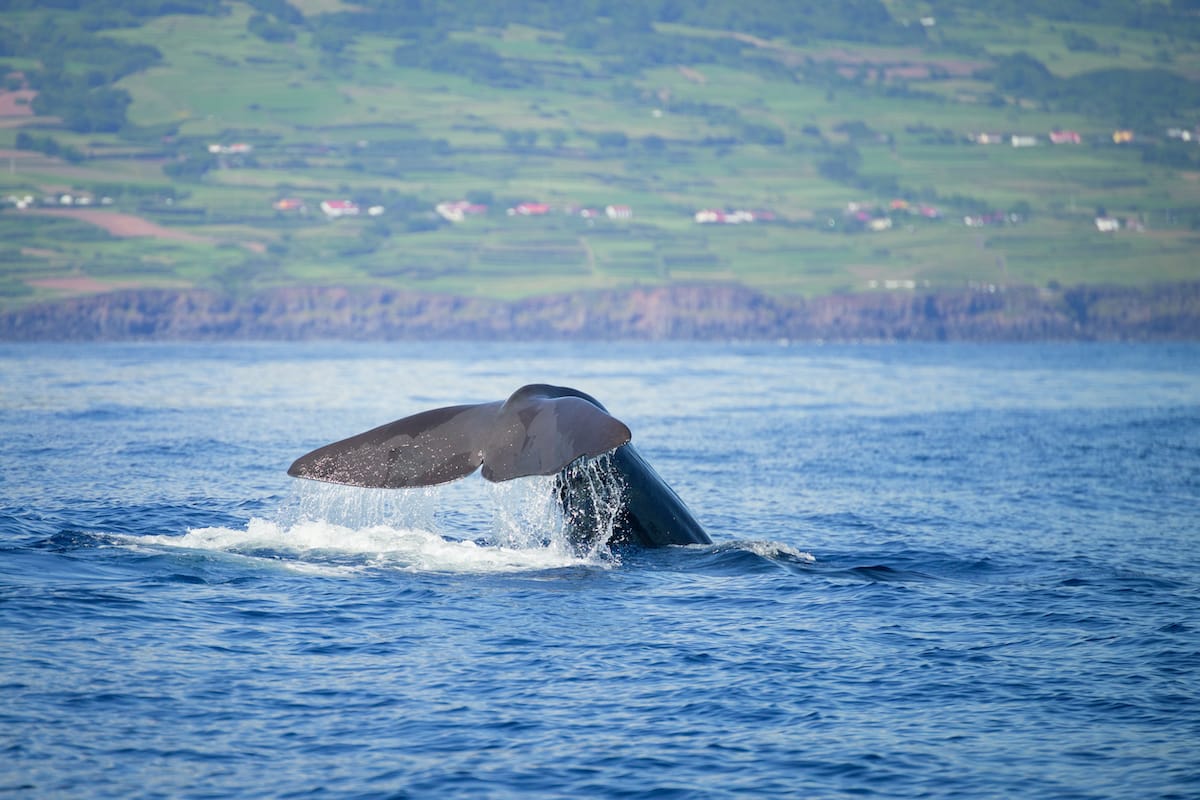
The day will begin at Lajes do Pico harbor where you will check in, get a briefing, and head on board! Your trip includes a life jacket, the guides, and a raincoat/pants if the weather is lousy.
Hotel pick-up/drop-off is not included. Food and drinks are also not included. This is not a wheelchair-friendly tour.
>> Click here to check tour rates and availability
2. Take a Pico Island Full-Day Tour
If you are limited on time on the Azorean’s youngest island, then you should book a tour of Pico.
The Pico tour will take you to all of the main sites on the island while accompanied by a certified tour guide. It will also take you to enjoy local produce from the island, including Pico’s UNESCO-protected wine.
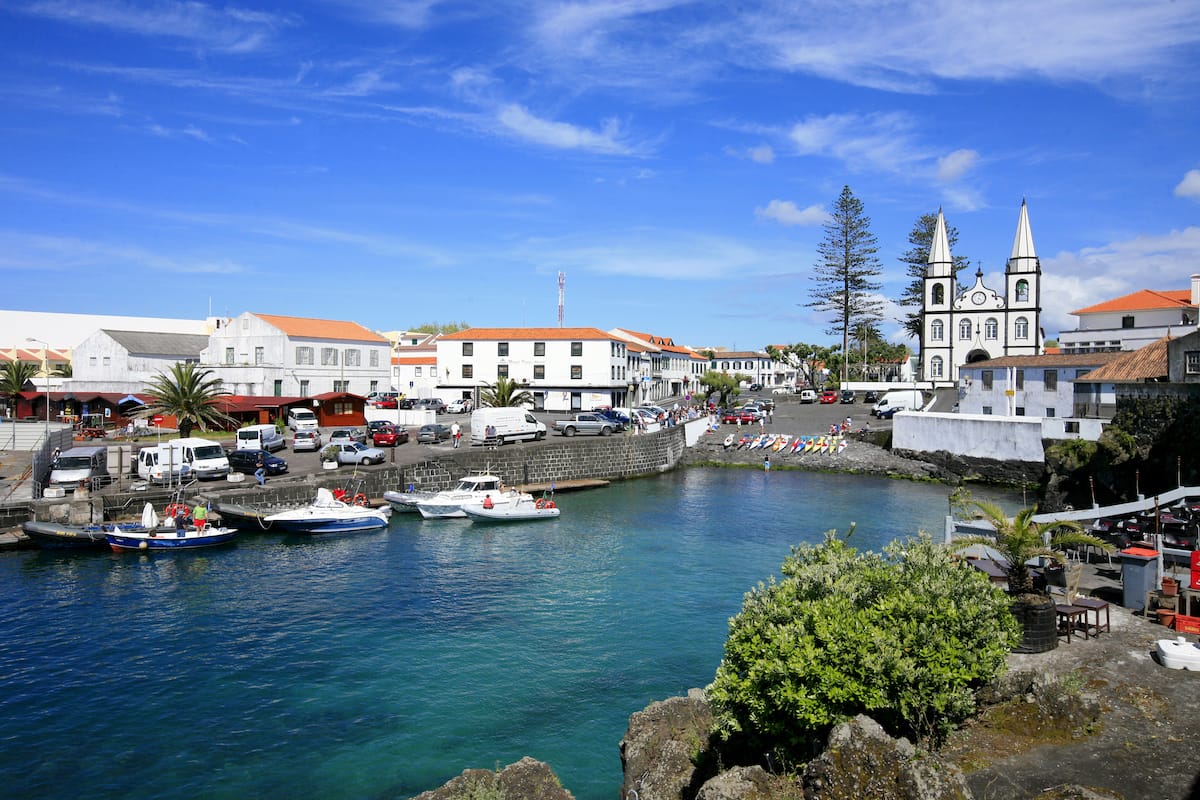
You will also learn all about the history of the island and how whaling made an impact on the place. This tour will show you all the things to do in Pico in an efficient and easy way.
>> Click here to check tour rates and availability
3. Drink UNESCO Wine & Visit Museu do Vinho
Drink in the history of Pico Island by learning all about the wine production that was an integral part of the island’s economy and history.
The rich, fertile volcanic soil led to some of the best wine in the Azores, even revered by the Tsars of Russia.
To protect the vines from the salty winds, lava stone walls were erected and these walls have since become protected by UNESCO due to their significance to the culture and history of the island.
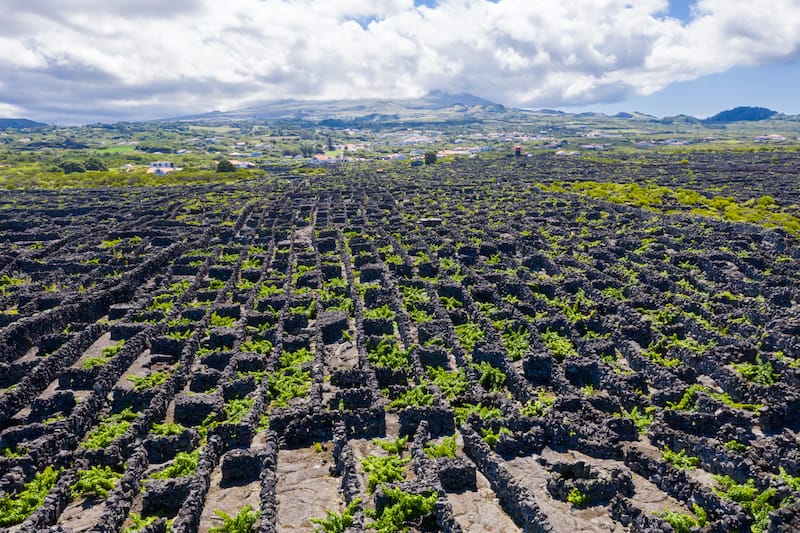
The Azores’ wine industry collapsed in the early 1900s due to a disease wiping out all of the plants. The EU has since funded projects to restart wine production on the islands.
The small wine museum, in an old winery and convent, will take you through the history of wine production on the island and all about how they grew the vines.
You can find Museu do Vinho at Rua do Carmo in Madalena.
4. See a Lava Tube at Gruta das Torres
Gruta das Torres is Portugal’s longest lava tube at around 3.2 miles (5.2km) in length.
The first 450m of the tunnels are opened to tourists to take a guided tour and learn all about the tubes’ formation 1500 years ago.
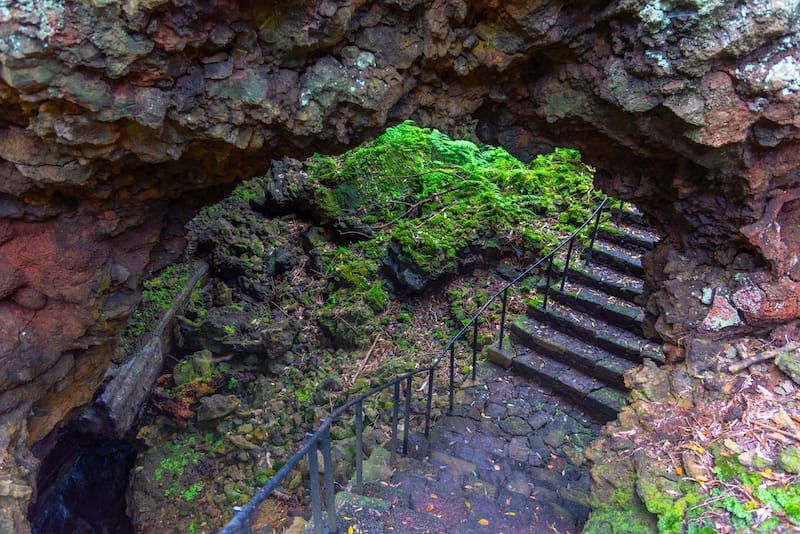
There is also a visitor’s center at the entrance to the tubes and it will teach you all about volcanos and how these natural structures can be protected.
The building has won several awards for its design, a design that tries to keep its impact on the environment to a minimum and not block any sunlight from reaching the entrance of the tunnel.
5. Hike Mount Pico
Pico is home to Portugal’s highest peak, the dormant Pico Volcano. It stands at 7731 ft (2351m). The hike up the mountain is tricky but you don’t need to be an elite athlete to complete it.
The journey is marked out with a number of poles and all people who hike the mountain must check into the Casa da Montanha located at 3937ft (1200m) and they will provide you with a GPS location that will track your movements up the hill for safety purposes.
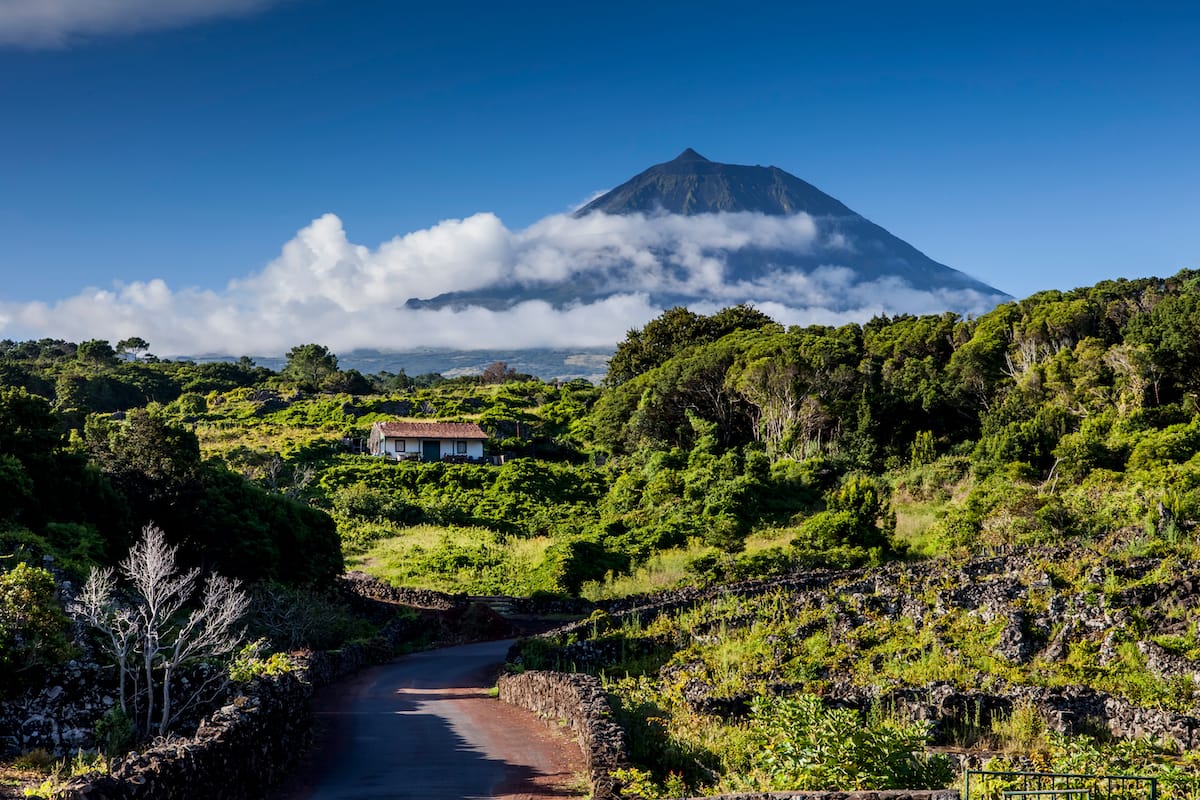
The hike is very steep and the weather can change so make sure you have the right equipment with you. You can check my Azores packing guide for hiking equipment inspiration.
For a different kind of experience, you can book an overnight tour where you camp at the summit of Mount Pico after watching the sunset.
6. Pay Respects at Museu dos Baleeiros
Pico’s economy was mostly based on whaling until the practice was outlawed in 1984. Museu dos Baleeiros will take you through the history of Azorean whaling traditions that remained unchanged for centuries.
You will learn all about how whaling was done on the islands and the products they produced from whales.
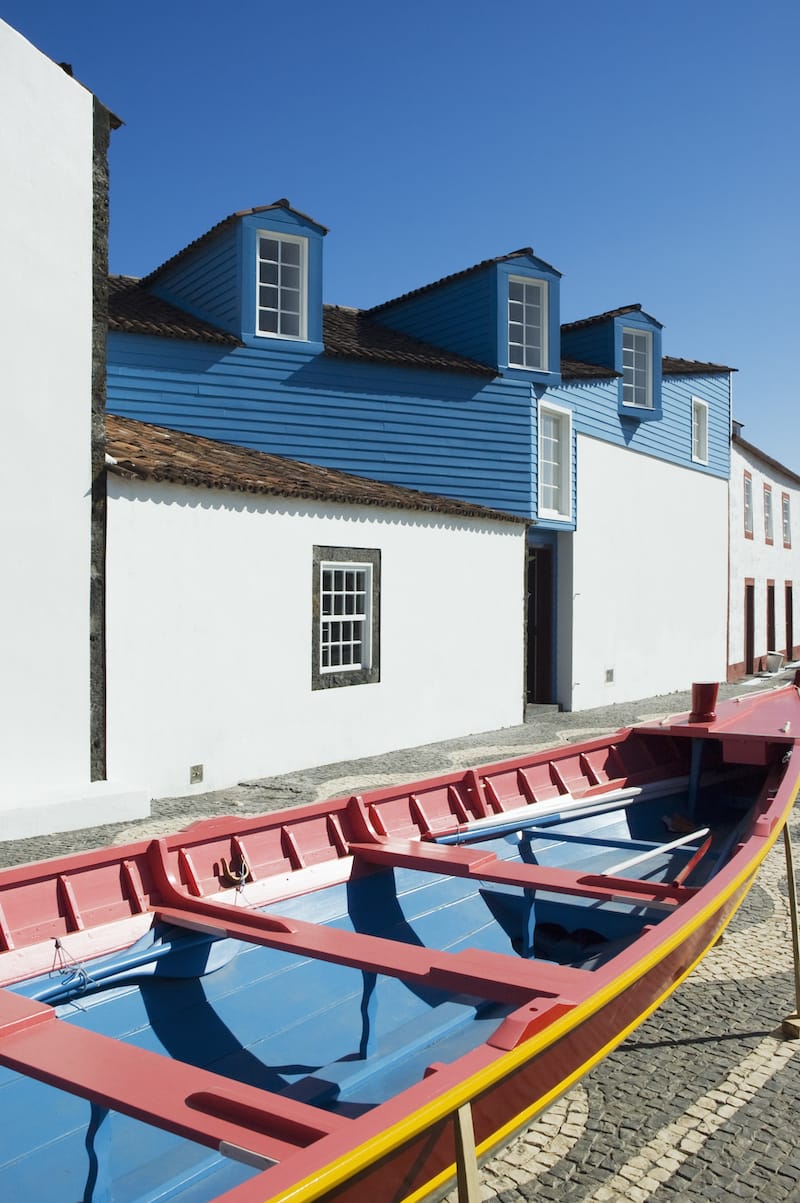
Thankfully, the practice has now ended but the knowledge of tracking whales was retained and instead was used for the Azores whale watching industry where tourists can learn all about the 28 species of whales and dolphins that pass by the islands.
7. Enjoy Nature at Lagoa do Capito
Take a break and chill out at Lagoa do Capito. The small lake at the foot of Mount Pico is a lovely little place to enjoy a gentle hike or simply take in the beautiful Azorean nature.
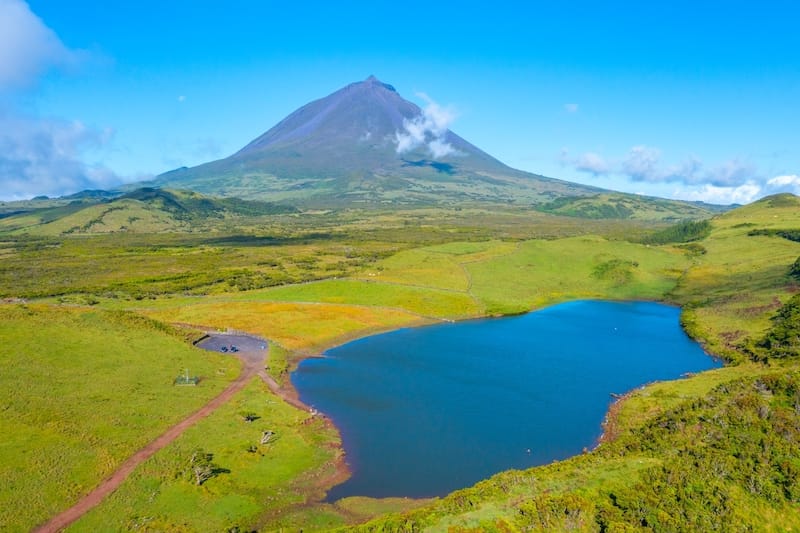
The area is home to plenty of pretty flowers and plants, as well as different species of birds.
It’s a great place to recover after hiking Mount Pico or to simply take stunning photos.
8. Have Seafood by the Sea at O Ancoradouro Restaurant
Enjoy a delightful seafood dinner with fresh prawns and fish by the ocean at O Ancoradouro in Madalena.
This restaurant is one of the top-rated in the Azores and the views are as jaw-dropping as the quality of the food there.
Pico Island (Information + FAQ)
The island of Pico is the second-largest island in the Azorean archipelago and home to the highest peak in the whole of Portugal.
Protruding out of the sea, the island is visible on clear days from many of the other nearby islands with its distinct, black hue giving it the name Ilha Preta (Black Island).
The large volcano, which last erupted in the 18th century, has led to the area being incredibly fertile thanks to the ash-heavy volcanic soil.
The rich, volcanic soil made the island perfect for growing crops and giving the wine industry a unique home in the Azores and especially in Pico.
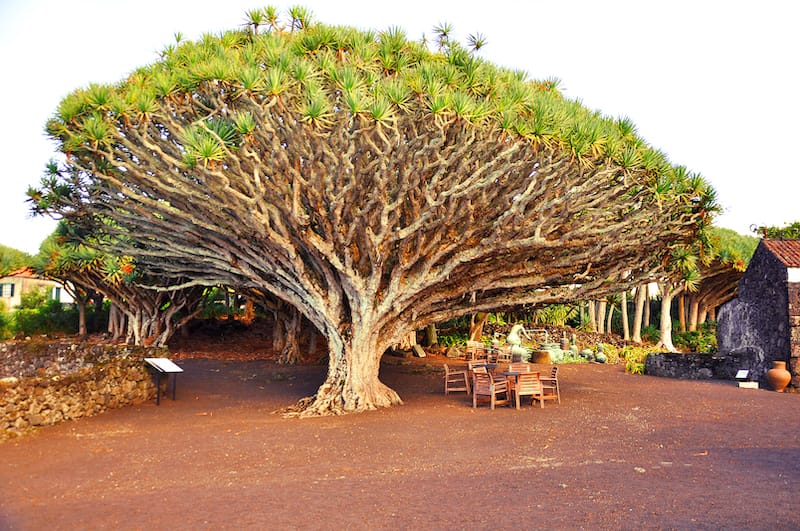
The fertile soils and micro-climate created due to the elevation of the island meant that grapevines were easily grown and capable of yielding delicious grapes in large numbers.
The wines produced on the island quickly grew international recognition, with the wine sent north to the UK, west to the Americas, and east where Russian tsars stocked their residences with the fine tipple.
Sadly, after centuries of popularity, the crops were hit by pests and powdery mildew that destroyed the vineyards and caused an economic crisis on the island.
Following the collapse of the wine industry, commercial whalers set up on the island due to its closeness to the deep waters of the Atlantic.
Whalers supported the island economy up until the 1980s when whaling was outlawed in Portugal. Since then, the island has looked towards tourism to support its economy, with a focus on award-winning sustainable tourism.
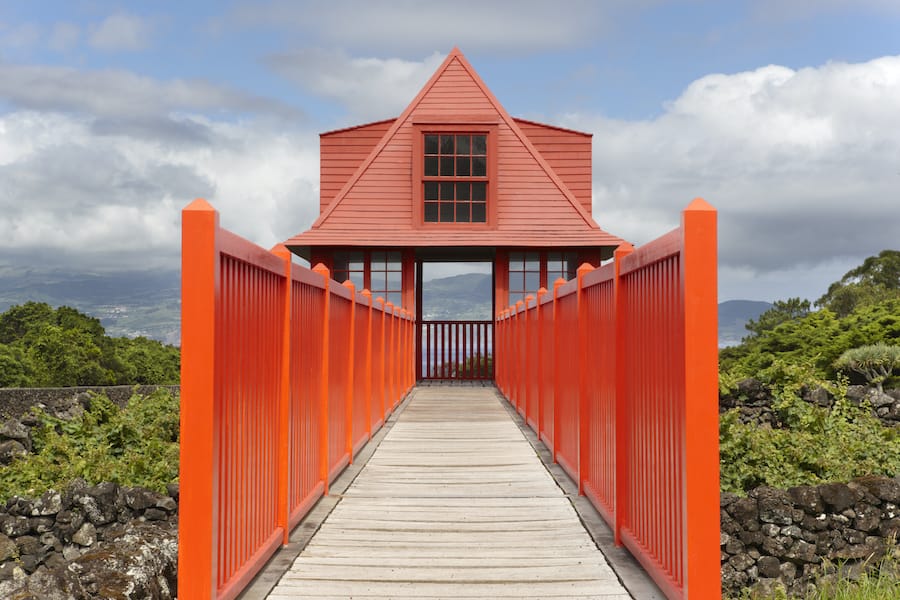
With the island now focusing on tourism and the other things to do in Pico, there is plenty to keep occupied with from exploring nature to copious activities in the deep waters of the Atlantic ridge.
After spending a day hiking in Portugal to the top of Mount Pico, a mountain that offers one of the best views in the Azores, head down to the remaining vineyards that still produce the wines that were popular throughout the Western world and where the growing methods have now been protected by UNESCO.
You’ll find all the other fantastic things to do above in this guide!
How to Get to Pico
Flights to Pico
The easiest way to get to Pico is to fly there from Sao Miguel. In order to get to Sao Miguel (or to Terceira), you can hop on a flight from mainland Portugal or the US, Canada, or a few other places abroad.
Ferries to Pico
There are also ferries that go to Pico from other islands in the Azores. There are two ferry ports on Pico- one is called Madalena and the other is Sao Roque.
You can get to Faial and Sao Jorge directly from Pico… to reach other destinations, it will require additional stops. For example, to reach Sao Miguel by ferry from Pico, you will make three stops and it will take 15 hours.
You can see more about Pico ferry routes, including prices, here.
Best Time to Visit Pico
The best time to visit Pico is pretty much at any time of the year. However, the winters can be a bit unfavorable when it comes to weather and autumn can also bring rain and storms.
Most of Pico’s rainfall comes during the winter months when the average temperate is about 16C (or 60F).
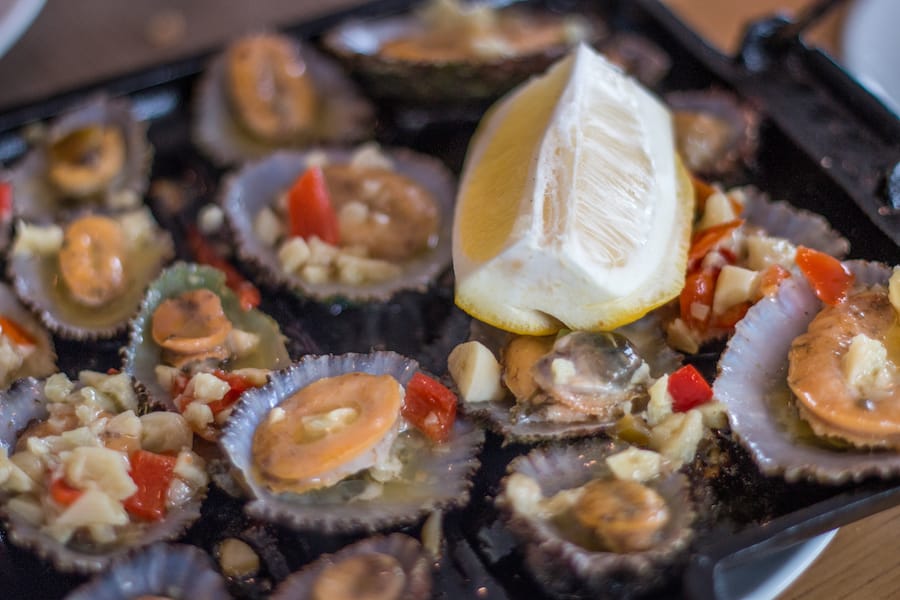
Please also note that if you’re planning to take ferries around the Azores, many routes do not operate during the winter months.
Things to Bring to the Azores
There are quite a few things I could recommend to bring to the Azores, but I have a whole Azores packing guide for that! Here are a few essentials to consider bringing for the trip:
- Sea bands: If you’re taking a boat tour at all, you will want to bring along some seasickness bands. The waters are open in the Azores and can be quite rough! Click here to shop for sea bands.
- European plug adapter: If you’re venturing to Pico from the United States, don’t forget to bring a European plug adapter with you! I recommend this one from Amazon.
- Dry bags: The weather in the Azores is unpredictable and you definitely don’t want the rain or wind to spoil your trip. I recommend these amazing dry bags from The Friendly Swede.
- Klean Kanteen: I never travel without a water jug in my backpack. I love this one from Klean Kanteen and I have the exact same one and use it religiously!
Where to Stay in Pico
There are quite a few great accommodation options on Pico Island.
Here are our top recommendations and they will cover all budgets regardless of whether you’re traveling on a luxury budget or a shoestring one.
- Aldeia da Gingeira (luxury villa)
- Atlantic Heritage Luxury Villa
- Barrocas do Mar (mid-range apartment)
- PJA – Pico Youth Hostel (budget)
Click here for a guide to Sao Miguel hotels.
If you’re seeking things to do in Pico in the Azores, we hope you find some activities and things do to in this guide.
The Azores are truly a gem and tourism deserves to be dispersed a bit better on the islands. This guide on what to do in Pico should help garner interest in other islands in the archipelago!
More Azores Travel Guides
- Best things to do in Terceira
- Ultimate Azores itinerary
- Waterfalls in the Azores
- Whale watching in the Azores
- Best places to stay in the Azores
- Sao Vicente Lodge
- What to know before visiting the Azores
- Snorkeling in the Azores
- Scuba diving in the Azores
- Sailing in the Azores
- Best Azores tours
- Azores packing list

Megan is a travel blogger and writer with a background in digital marketing. Originally from Richmond, VA, she now splits her time between Frankfurt, Germany and Arctic Finland after also living in Norway, Armenia, and Kazakhstan. She has a passion for winter travel, as well as the Nordic countries, but you can also find her eating her way through Italy, perusing perfume stores in Paris, or taking road trips through the USA. Megan has written for or been featured by National Geographic, Forbes, Lonely Planet, the New York Times, and more. She co-authored Fodor’s Travel ‘Essential Norway’ and has visited 45 US states and 100+ countries.
